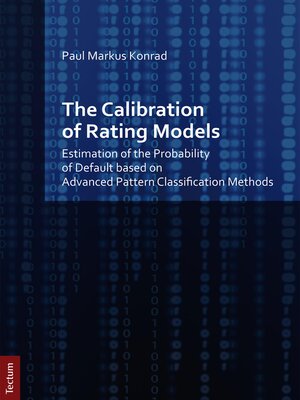The Calibration of Rating Models
ebook ∣ Estimation of the Probability of Default based on Advanced Pattern Classification Methods
By Paul Markus Konrad

Sign up to save your library
With an OverDrive account, you can save your favorite libraries for at-a-glance information about availability. Find out more about OverDrive accounts.
Find this title in Libby, the library reading app by OverDrive.



Search for a digital library with this title
Title found at these libraries:
| Library Name | Distance |
|---|---|
| Loading... |
All across Europe, a drama of historical proportions is unfolding as the debt crisis continues to rock the worldwide financial landscape. Whilst insecurity rises, the general public, policy makers, scientists and academics are searching high and low for independent and objective analyses that may help to assess this unusual situation. For more than a century, rating agencies had developed methods and standards to evaluate and analyze companies, projects or even sovereign countries. However, due to their dated internal processes, the independence of these rating agencies is being questioned, raising conflicts of interests which largely discredit this sector. Stakeholders are debating the enormous economical and political impact of the assessments, the intransparent methodology, the questionable timing of rating announcements, the accuracy and the focus on profitability. This work opens the statistical toolbox used in credit rating and in the validation of its results. After embedding the research field into its institutional and historical context, it presents standard and new techniques necessary to adequately understand the statistical approach in credit rating. It then introduces a new method for the validation of the central output parameter of the rating model, the Probability of Default. To illustrate the practical application, the theoretical considerations are accompanied by an extensive empirical study. The methods presented and developed in this book are easily applicable. Banks and regulators can statistically test the consistency of a rating methodology regarding discriminatory power and calibration quality.







